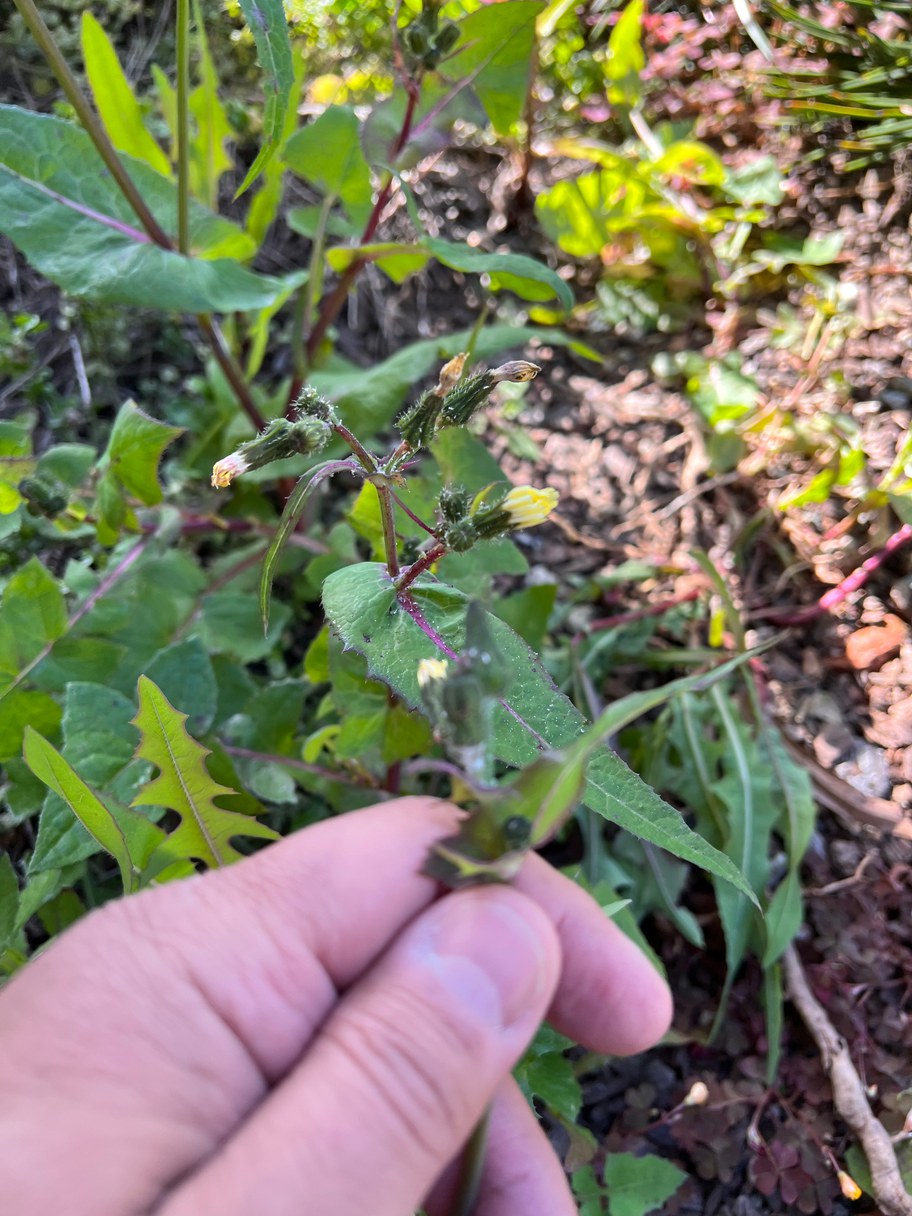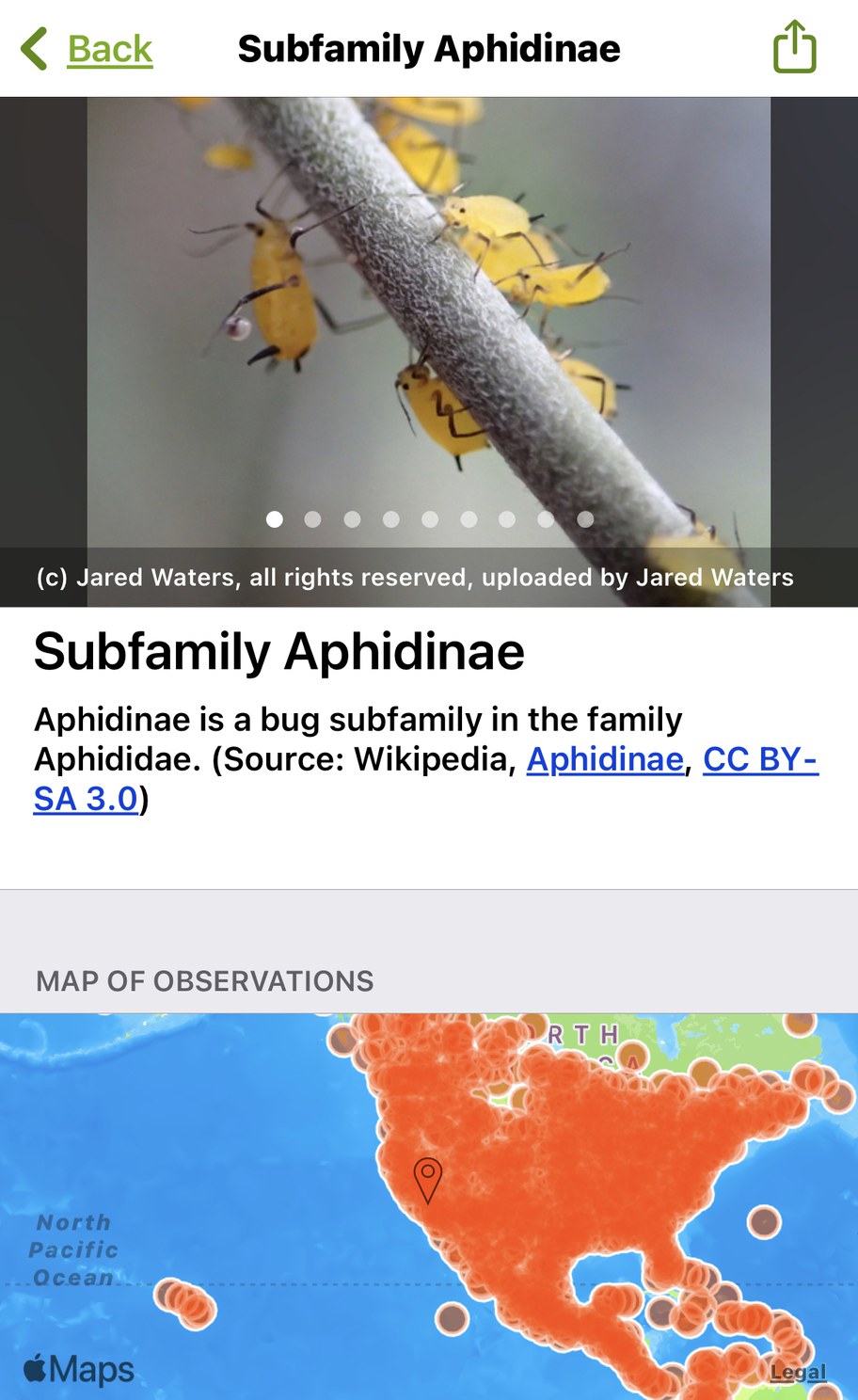The City Nature Challenge started in 2016 as a friendly rivalry between LA and San Francisco. The idea was to see which city could get regular folks to take the most pictures of plants and animals in their own backyards and neighborhoods.
Since then, the challenge has expanded to cities all around the world. This year, another 438 cities will have people taking pictures and uploading them on apps like iNaturalist.
Any living organism is fair game. You don’t have to be out in the “wild” and capture something exotic.
Lila Higgins, senior manager for community science at the Natural History Museum of Los Angeles County, is one of the founders of the Nature Challenge and a regular guest on Greater LA. Right outside KCRW studios, in a small patch of plants surrounded by a concrete parking lot, Higgins and Host Steve Chiotakis find a small plant and take pictures.

This picture of the sow thistle’s flower is to be uploaded to the iNaturalist app. Photo by Steve Chiotakis.
She recommends capturing individual shots of the flower, leaves, and stem, as well as the whole plant. When Chiotakis uploads the images to the iNaturalist app, it identifies the plant as a sow thistle — a weed.
The two repeat the process with some aphids under the leaves of the thistle.

When a photo of a plant or animal is uploaded to iNaturalist, the app identifies the species and provides information about it. In this case, a picture of aphids on the leaves of the sow thistle. Photo by Steve Chiotakis.
Higgins says 1,670,000 observations were uploaded last year from metropolitan areas all over the world.
“We documented thousands of rare and endangered species last year, and we will document more this year. And so if we don't know where plants and animals that are rare and endangered live, how do we know where to do our conservation efforts? So we really need this data to help inform how we're going to make our cities better places for humans and wildlife to live.”
To find out how to get involved, go to the Natural History Museum’s City Nature Challenge page. Then start taking pictures of all the wild (and not so wild) stuff in your own backyard and neighborhood.
